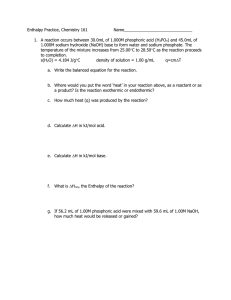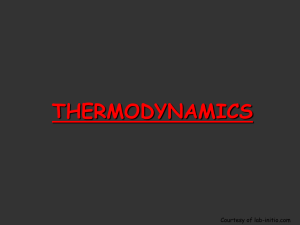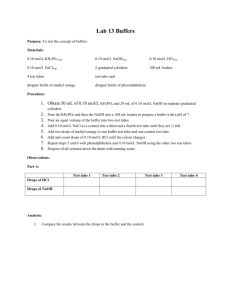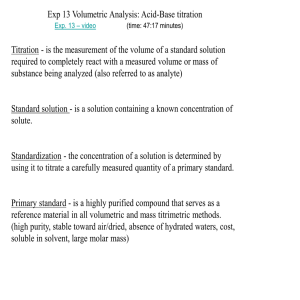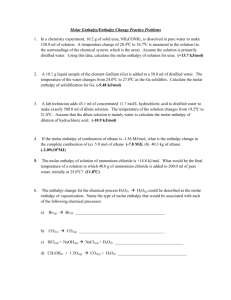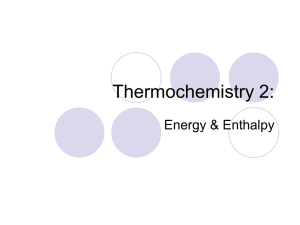Calculating Enthalpy Changes
advertisement
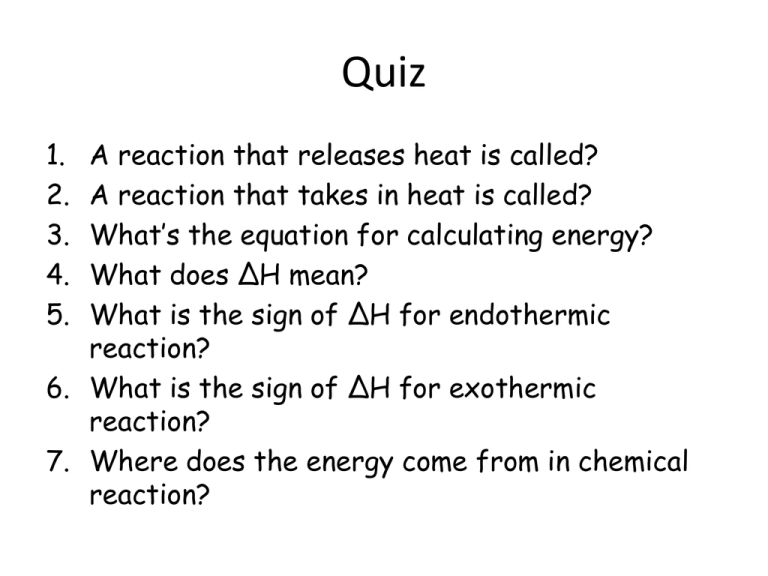
Quiz 1. 2. 3. 4. 5. A reaction that releases heat is called? A reaction that takes in heat is called? What’s the equation for calculating energy? What does ΔH mean? What is the sign of ΔH for endothermic reaction? 6. What is the sign of ΔH for exothermic reaction? 7. Where does the energy come from in chemical reaction? Calculating Enthalpy Changes What you need • • • • • Measure temperature change Specific heat capacity of surroundings Calculate energy change Use mass to determine enthalpy change Negative or positive Measuring temperature change • To measure the heat change of a reaction experiments are carried out in a calorimeter • The energy released (or absorbed) by the reaction results in a change in the temperature of the water in the surrounding container. Specific heat capacity • Specific heat capacity is the amount of heat required to raise the temperature of 1g of a substance 1 degree Celsius. • The specific heat capacity for water is 4.18 J I.E. it takes 4.18 J to raise 1g of water (1mL) 1 degree Celsius. • Calorimeters measure the temp change in water surrounding the reaction Calculating energy change • If the temperature change of a known mass of water in the calorimeter is measured then the E value for the water is given by q = 4.18 x mass H2O x T ( where T = final temp - initial temp) Specific heat capacity for water is 4.18 J/goC For example In an experiment 1.500 g of Mg(s) was combined with 125.0 mL of 1.0 M HCl. Initial temperature 25.0oC, final temperature 72.3oC. Calculate the heat involved in the reaction 72.3 – 25.0 = 47.3oC Solution is mostly water so 125mL = 125g E = 4.18 x 125 x 47.3 = 24714.25J Or 25 kJ Burning Chippies/magnesium In pairs, collect: 2 pieces of chippies, tongs, 2cm of magnesium, Bunsen from the cupboard, test tubes, test tube holders and thermometers. Put 10mL of water in the test tube and activate the chippies. Place the chippies underneath the test tube so all the heat is transferred to the test tube, record the change in temperature. Enthalpy is measured in J per mole The energy calculated must be divided by the amount of reactant. 1.500 g of Mg(s) was combined with 125.0 mL of 1.0 M HCl. 1.50g ÷ 24.31 = 0.0617 mol 24.7kJ ÷ 0.0617 = 400kJ mol-1 Positive or Negative It the temperature of the surroundings increases energy has been lost from the system. -H If the temperature of the surroundings decreases energy has been absorbed by the system + H Exercise 1: Calculate the value of rH in kJ mol -1 for the dissolving of solid NaOH in water, if it is found that when 10 g of NaOH is dissolved in 250 mL water the temperature of the water increases from 25.0 oC to 29.8 oC. First T 29.8 - 25.0 = 4.8 Then energy change 4.8 x 4.18 x 250 = 5016 Now work out amount of NaOH 10g ÷ 40g/mol = 0.25 mol Enthalpy change 5016 ÷ .25 = 20064 Jmol-1 = 20.1kJmol-1 Exothermic so -20.1kJmol
